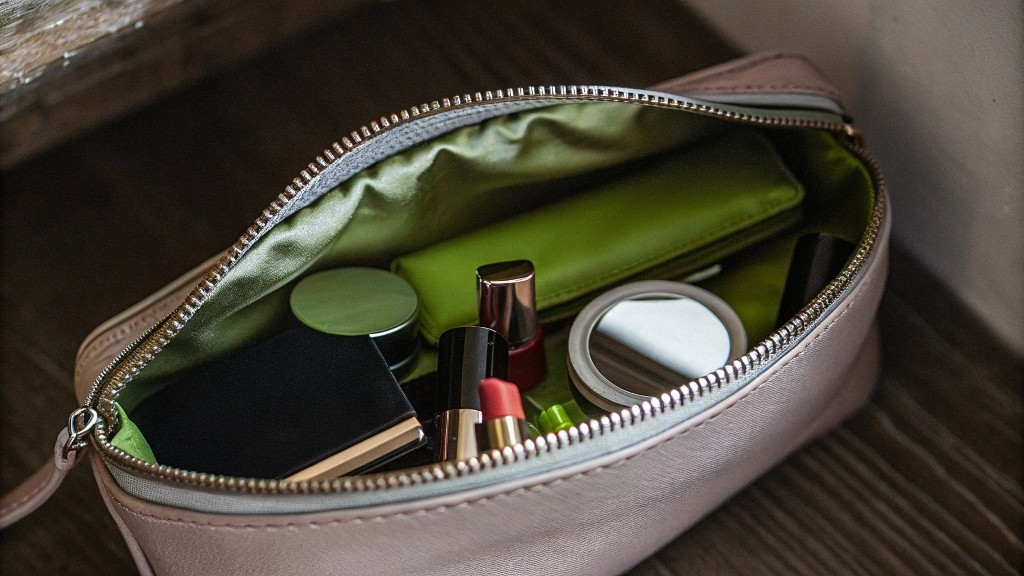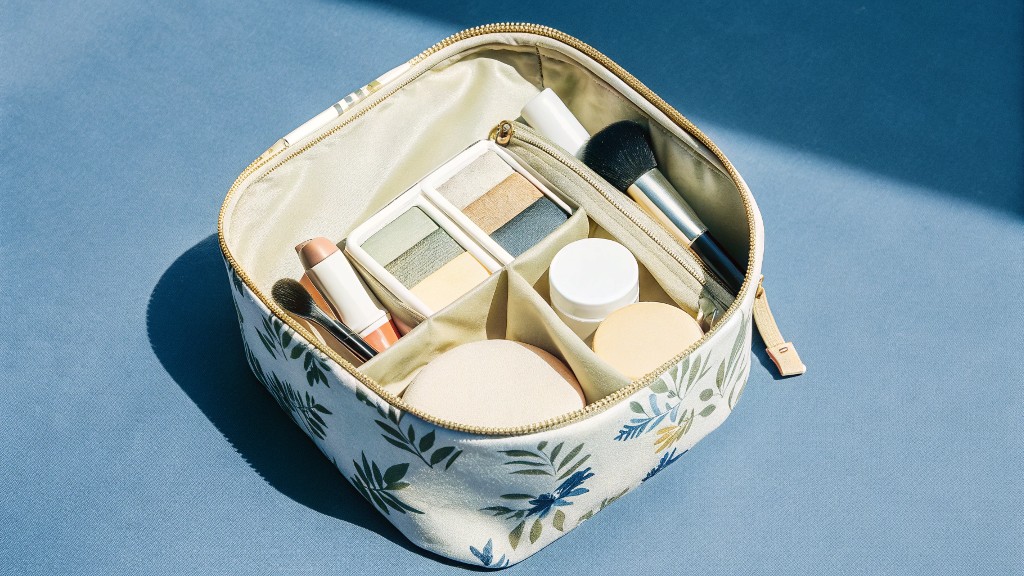Post Code:511400
Email:sales@blaccessory.com
whatsApp:+86 18028696007
Starting a small beauty business requires careful planning, market research, and strategic execution across product development, branding, and distribution. Poor preparation leads to regulatory issues, quality problems, and financial losses in competitive beauty markets.
Start a small beauty business by identifying niche markets, developing unique products, ensuring regulatory compliance, and establishing professional presentation through quality packaging. Q&N supports beauty startups with bow-decorated cosmetic bags trending in 2025 for elegant brand differentiation.
After working with countless beauty entrepreneurs through our Q&N cosmetic bag manufacturing over the past 15 years, I’ve observed successful startup patterns and common pitfalls. Our 2025 focus on bow-decorated cosmetic bags reflects the importance of elegant presentation in building credible beauty brands from inception.
Understanding cosmetic industry profitability helps entrepreneurs identify successful business models and market opportunities. I analyze profitability factors from our Q&N perspective serving diverse beauty companies through accessory manufacturing.
L’Oréal maintains highest profitability through premium positioning, innovation investment, and global scale achieving 18% operating margins. Q&N observes profitable beauty companies prioritizing presentation details like bow-decorated cosmetic bags trending in 2025 for enhanced brand perception.
Profitability metrics in cosmetics vary significantly between business models, market segments, and operational strategies affecting long-term sustainability and growth potential. Luxury brands achieve higher margins through premium positioning but lower volume sales. Mass market companies generate profits through scale efficiency and broad distribution. Niche brands succeed through specialized positioning and targeted marketing.
L’Oréal leads cosmetic industry profitability through diversified portfolio strategy spanning luxury, professional, mass market, and active cosmetics segments. Their research and development investment creates innovative products commanding premium pricing. Manufacturing scale optimization reduces costs while maintaining quality standards. Global presence enables market expansion and risk diversification.
Estée Lauder demonstrates luxury cosmetics profitability through premium brand portfolio including MAC, Clinique, and Tom Ford achieving operating margins exceeding 15%. Their focus on prestige channels maintains pricing power and brand exclusivity. Strategic acquisitions expand market reach and product categories. Professional presentation through elegant packaging supports premium positioning.
Unilever achieves mass market profitability through volume scale and operational efficiency across personal care and beauty segments. Their sustainable sourcing initiatives reduce long-term costs while appealing to conscious consumers. Distribution partnerships ensure global product availability. Brand portfolio optimization focuses resources on highest-performing products.
Our Q&N observations serving profitable beauty companies reveal common success factors beyond financial metrics. Attention to presentation details like bow-decorated cosmetic bags creates emotional connections with consumers. Professional packaging and accessories support premium positioning regardless of product category. The 2025 bow decoration trend demonstrates how small details influence brand perception significantly.
Profit margin analysis reveals industry benchmarks and performance expectations across different cosmetic categories. Skincare products typically achieve higher margins through perceived efficacy and ingredient premiums. Color cosmetics face pricing pressure but benefit from trend-driven replacement cycles. Fragrance maintains strong margins through emotional positioning and brand loyalty.
Direct-to-consumer models enable higher profitability through eliminated distribution markups and direct customer relationships. E-commerce platforms reduce overhead costs compared to traditional retail operations. Subscription services create predictable revenue streams and customer retention. Social media marketing provides cost-effective customer acquisition compared to traditional advertising.
Innovation investment drives long-term profitability through product differentiation and competitive advantages. Skincare research develops patented ingredients commanding premium pricing. Packaging innovation creates functional benefits and aesthetic appeal. Our Q&N bow-decorated designs represent innovation in cosmetic storage enhancing user experience and brand presentation.
Geographic market focus affects profitability through local preferences, competition levels, and operational costs. Emerging markets offer growth opportunities but require market education investment. Developed markets provide stable revenue but intense competition. Regional beauty preferences create opportunities for specialized positioning and premium pricing.
Operational efficiency improvements enhance profitability through cost reduction and quality consistency. Automated manufacturing reduces labor costs and improves precision. Supply chain optimization minimizes inventory costs and delivery times. Quality control systems prevent costly recalls and reputation damage.
| Profitability Factor | L’Oréal Strategy | Industry Impact | Q&N Observation |
|---|---|---|---|
| Premium Positioning | Luxury brand portfolio | Higher margins | Elegant presentation crucial |
| Innovation Investment | R&D leadership | Product differentiation | Details like bows matter |
| Operational Scale | Global manufacturing | Cost optimization | Efficiency enables quality |
| Brand Portfolio | Diversified segments | Risk mitigation | Consistent quality standards |
Cosmetic brand naming requires balancing memorability, legal availability, and market positioning while reflecting brand values and target consumers. Poor naming choices limit marketing effectiveness and legal protection opportunities.
Decide cosmetic brand names by researching trademark availability, testing pronunciation across markets, ensuring memorable spelling, and reflecting brand personality. Q&N supports brand identity through coordinated accessories like bow-decorated cosmetic bags trending in 2025 for cohesive presentation.
Brand name development begins with defining brand personality, target audience, and market positioning establishing the foundation for name selection criteria. Luxury brands typically favor sophisticated, elegant names suggesting premium quality. Natural brands often incorporate organic or botanical references. Youth-oriented brands prefer energetic, contemporary naming approaches.
Trademark research represents the most critical step in brand naming preventing costly legal issues and protecting intellectual property rights. USPTO database searches identify existing registrations and pending applications. International trademark searches ensure global protection opportunities. Professional legal counsel provides guidance on trademark strength and registration strategies.
Linguistic considerations ensure brand names translate appropriately across target markets without negative connotations or pronunciation difficulties. Cultural sensitivity prevents offensive interpretations in different languages. Phonetic testing verifies easy pronunciation for diverse audiences. Written appearance considers readability across different alphabets and writing systems.
Our Q&N experience with international beauty brands reveals naming challenges and successful strategies across diverse markets. Brand names must coordinate with packaging design and accessory presentation. The 2025 bow-decorated cosmetic bag trend requires names complementing elegant aesthetic positioning. Visual harmony between brand name typography and packaging creates cohesive brand identity.
Memorability factors include length, pronunciation ease, and distinctiveness helping consumers remember and recommend brands effectively. Short names generally achieve better recall but may face availability challenges. Unique spelling creates distinctiveness but may cause pronunciation confusion. Rhythm and alliteration enhance memorability through linguistic appeal.
Digital considerations affect brand name selection in modern marketing environments dominated by online presence and social media. Domain name availability determines website address options and SEO potential. Social media handle consistency enables unified online presence. Search engine optimization benefits from keyword-relevant naming when appropriate.
Testing procedures validate brand name effectiveness with target consumers before final selection and trademark registration. Focus groups provide feedback on name perception and associations. A/B testing compares multiple options across different demographics. Professional naming research services offer systematic evaluation methodologies.
Scalability planning considers future brand expansion and product line development ensuring name flexibility. Generic names allow broader product categories but may lack distinctiveness. Specific names create strong associations but may limit expansion opportunities. Our Q&N clients benefit from names supporting both core products and complementary accessories.
Legal protection strategies secure trademark rights and prevent competitor infringement protecting brand investment and market position. Federal trademark registration provides nationwide protection and legal enforcement rights. International registration through Madrid Protocol enables global protection efficiency. Continuous monitoring prevents unauthorized usage and maintains trademark strength.
Brand name integration with visual identity creates cohesive brand presentation across all customer touchpoints and marketing materials. Typography selection complements name characteristics and brand personality. Color coordination supports name associations and emotional responses. Packaging design harmony ensures consistent brand experience from name recognition through product usage.
| Naming Criteria | Evaluation Method | Legal Considerations | Q&N Brand Support |
|---|---|---|---|
| Trademark Availability | Professional search | USPTO registration | Coordinated accessories |
| Market Appeal | Consumer testing | International protection | Visual harmony |
| Pronunciation | Linguistic analysis | Cultural sensitivity | Global presentation |
| Memorability | Recall testing | Distinctive registration | Brand consistency |
| Digital Presence | Platform availability | Domain protection | Online coordination |
Understanding essential cosmetic qualities helps consumers make informed purchasing decisions and helps manufacturers maintain quality standards. Poor quality cosmetics cause skin reactions, performance failures, and consumer dissatisfaction.
Good cosmetics demonstrate safety through tested ingredients, effectiveness through proven performance, and quality through consistent manufacturing standards. Q&N supports cosmetic quality through bow-decorated cosmetic bags trending in 2025 providing proper storage protecting product integrity and presentation.
Safety represents the fundamental quality requirement for all cosmetic products protecting consumer health and ensuring regulatory compliance across different markets. Ingredient testing validates compatibility with human skin and identifies potential allergens. Microbiological testing prevents contamination and ensures product sterility. Stability testing confirms safety maintenance throughout product shelf life under various storage conditions.
Patch testing procedures evaluate allergic reaction potential on diverse skin types before market release. Dermatologist evaluation provides professional assessment of safety claims and usage recommendations. Clinical studies document safety evidence supporting marketing claims and regulatory submissions. Our Q&N manufacturing partners prioritize safety through certified facilities and quality control systems.
Effectiveness delivers the promised cosmetic benefits meeting consumer expectations and marketing claims through measurable performance results. Foundation effectiveness includes coverage, color matching, and longevity throughout daily wear. Skincare effectiveness demonstrates visible improvements in targeted concerns like hydration or anti-aging. Color cosmetics effectiveness encompasses color payoff, blendability, and application ease.
Performance testing measures specific cosmetic attributes under controlled conditions validating marketing claims and consumer benefits. Wear testing evaluates longevity and appearance maintenance throughout typical usage periods. Application testing assesses ease of use and achievement of desired results. Consumer satisfaction surveys document real-world effectiveness and preference data.

Quality encompasses consistent manufacturing standards, ingredient purity, and reliable performance across production batches ensuring consumer confidence and brand reputation. Manufacturing quality control systems monitor critical parameters throughout production processes. Ingredient quality verification ensures purity standards and specification compliance. Finished product testing validates quality consistency before market release.
Our Q&N perspective on cosmetic quality extends beyond the products themselves to encompass presentation and storage factors affecting consumer experience. The 2025 bow-decorated cosmetic bag trend reflects quality attention to detail in accessory design. Proper storage maintains cosmetic quality by preventing contamination and environmental damage. Professional presentation supports quality perception and brand positioning.
Ingredient quality forms the foundation of cosmetic effectiveness and safety through careful selection and specification management. Premium ingredients provide superior performance characteristics and consumer benefits. Sustainable sourcing ensures ethical procurement and environmental responsibility. Purity standards prevent contamination and ensure consistent performance across production batches.
Formulation expertise translates quality ingredients into effective cosmetic products through scientific understanding and technical skill. Stability formulations maintain ingredient effectiveness throughout product shelf life. Compatibility testing ensures ingredient interactions don’t compromise safety or performance. Texture optimization creates pleasant application experiences supporting consumer satisfaction.
Manufacturing quality systems ensure consistent production standards and regulatory compliance through systematic quality management. ISO certification demonstrates commitment to quality standards and continuous improvement. Good Manufacturing Practices ensure sanitary production conditions and contamination prevention. Quality assurance testing validates finished products before consumer distribution.
Packaging quality protects cosmetic integrity during storage and transportation while supporting brand presentation and consumer convenience. Barrier properties prevent air and moisture exposure maintaining product stability. Dispensing systems ensure controlled application and prevent waste. Our Q&N bow-decorated bags provide additional protection and elegant presentation enhancing overall quality perception.
| Quality Dimension | Measurement Methods | Industry Standards | Q&N Quality Support |
|---|---|---|---|
| Safety | Clinical testing, dermatologist evaluation | FDA compliance, EU regulations | Certified manufacturing partners |
| Effectiveness | Performance testing, consumer studies | Marketing claim validation | Proper storage solutions |
| Consistency | Quality control systems, batch testing | ISO standards, GMP compliance | Professional presentation |
| Presentation | Visual assessment, consumer feedback | Brand positioning requirements | Bow-decorated elegant storage |
Starting a small beauty business requires systematic planning, quality focus, and professional presentation, with Q&N supporting entrepreneurs through bow-decorated cosmetic bags trending in 2025 for elegant brand differentiation.
Cosmetic bag manufacturers, custom cosmetic bags, cosmetic bag factory, bulk canvas cosmetic bags, wholesale bulk cosmetic bags, beauty, skin, PVC.
Hair Accessories: Hair ties, hair clips, headbands, and hairbands. Chic, stylish, suitable for any occasion.
Copyright © 2025 Bling Accessory Co., Ltd. | All Rights Reserved.